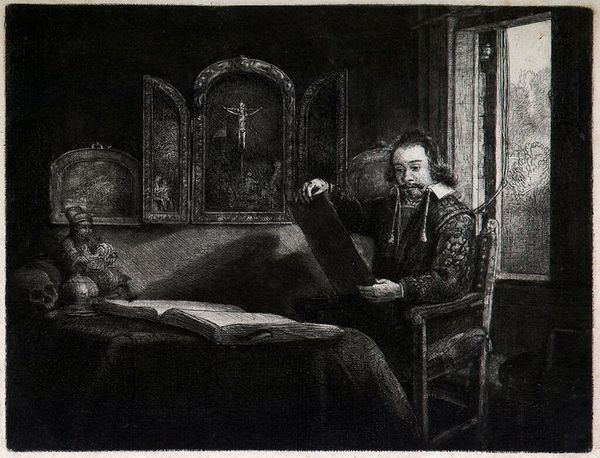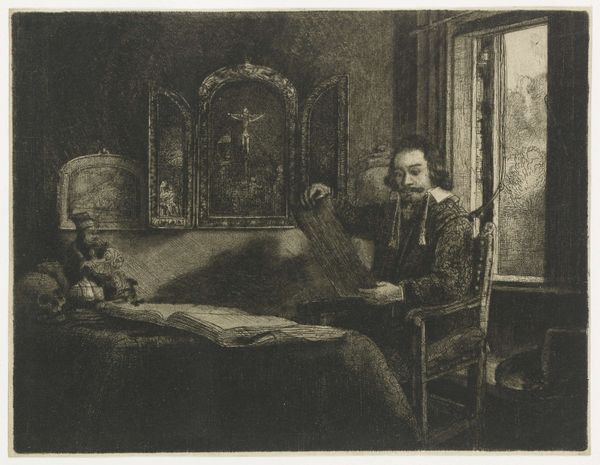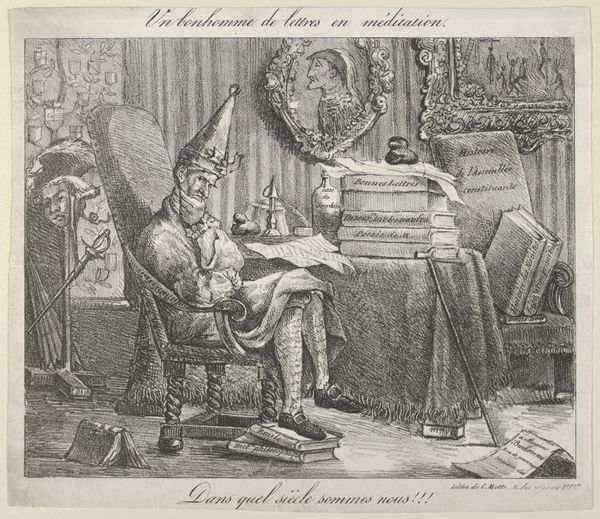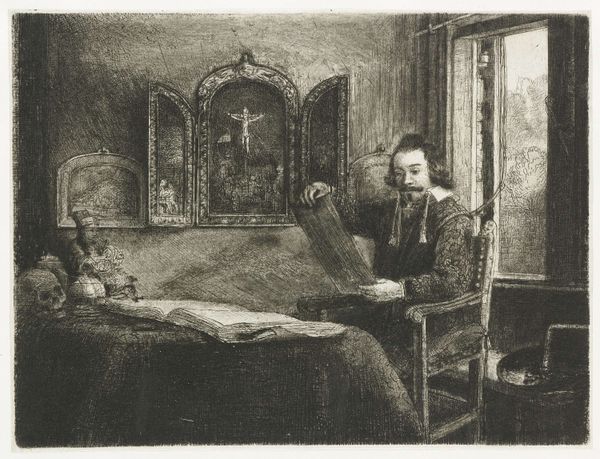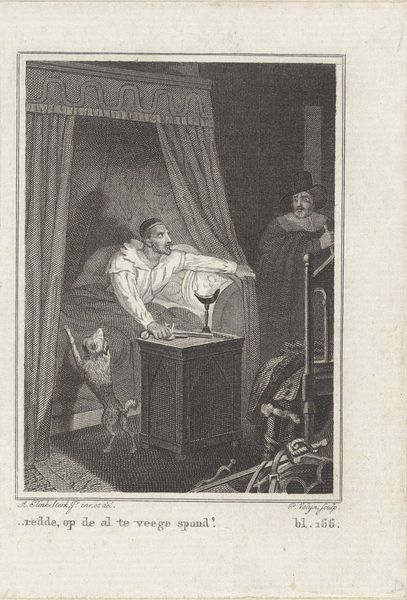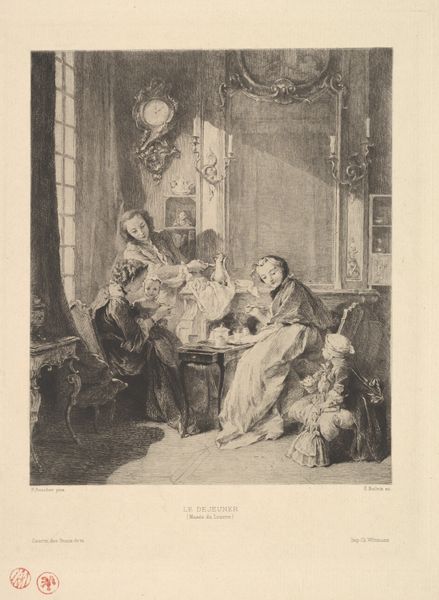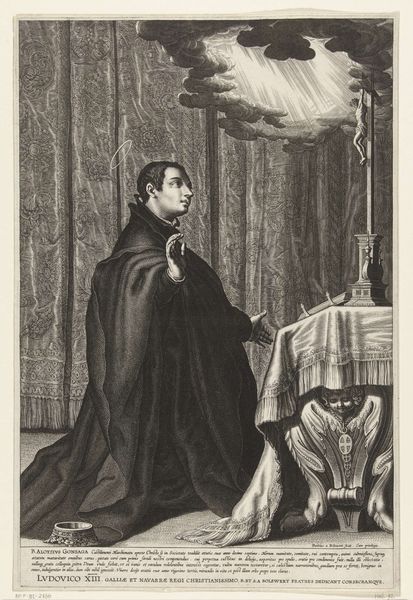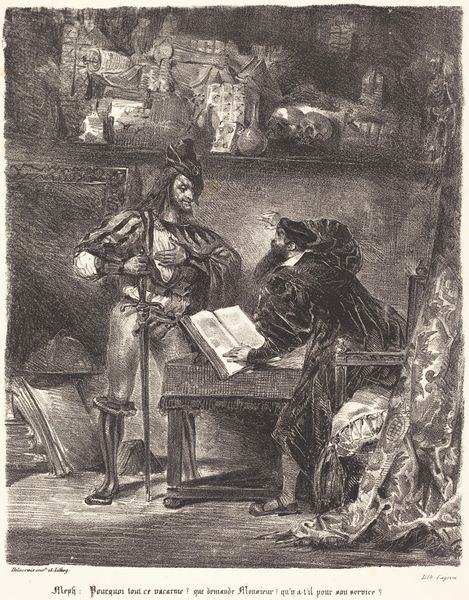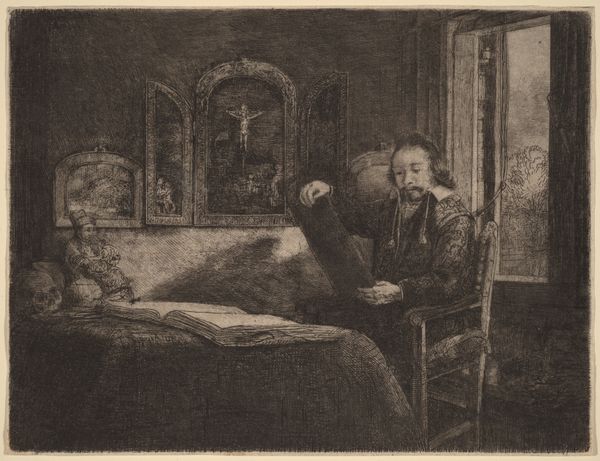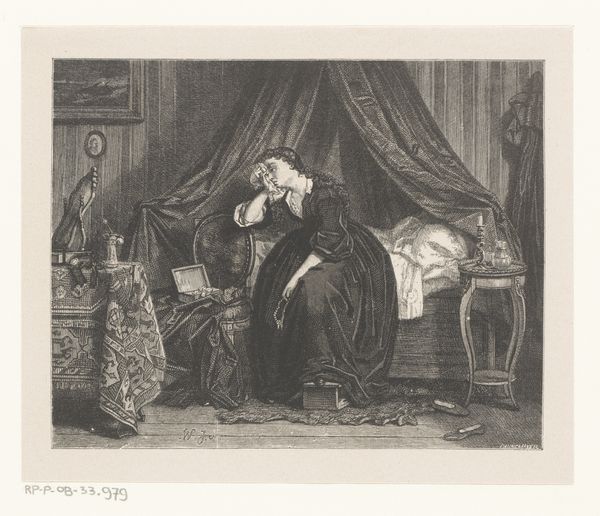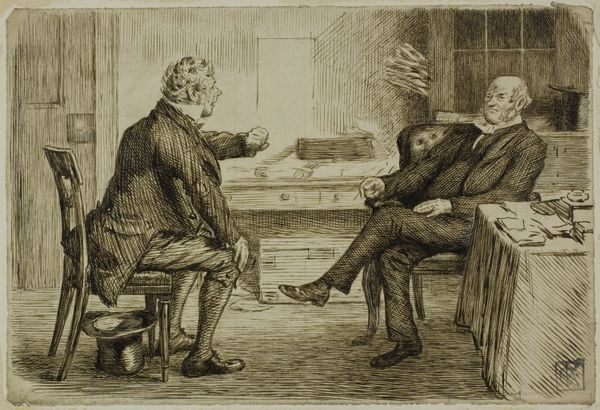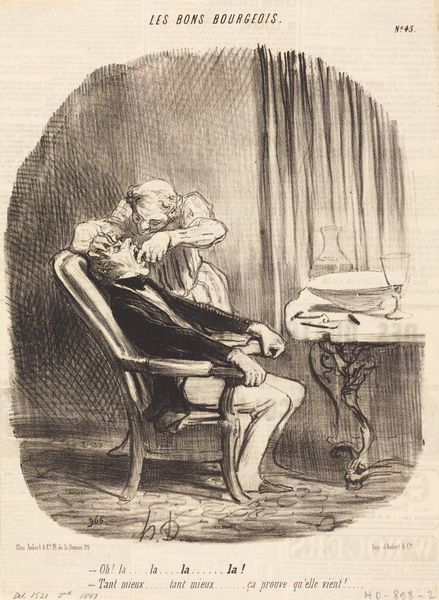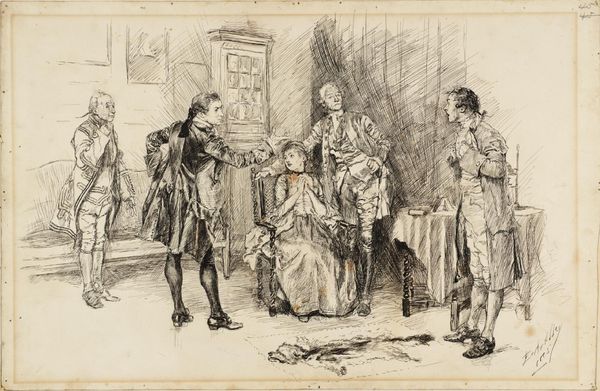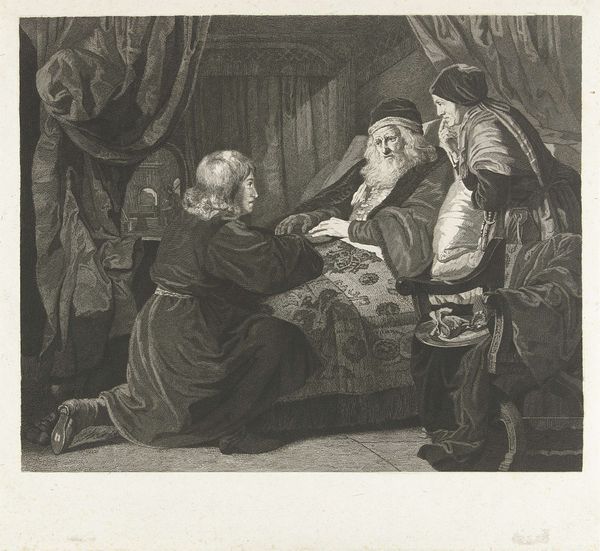
Copyright: Public Domain: Artvee
Curator: What a scene! Immediately, I’m struck by the contrast in textures—the rich, almost plush look of the monk's quarters versus the servant’s more rigid posture. Editor: That's an interesting observation. This is "The Canon's Dinner," painted in 1875 by Jehan Georges Vibert. We see a canon enjoying a rather opulent meal while a kneeling figure, perhaps a clergyman or a servant, reads to him. Vibert was known for his genre scenes depicting clerical life, often with a satirical edge. Curator: Satire is right! Look at the lobster on that table! The visual weight of that canopy bed layered with crimson fabric. I am keen on what the underlayers and treatment of this dyed cloth must have looked like during production and laundering processes of the time. The sheen suggests a specific quality of weave… How does this extravagance contrast with the vows we typically associate with religious life? Editor: Precisely! It speaks volumes about the Church’s social standing at the time, its inherent contradictions between vows of poverty and actual material wealth. The figure kneeling underscores that power dynamic through devotional servitude. This work offers, on the surface, a scene, but what kind of patronage was present? Did those of high station admire the power dynamic depicted? What did it say of civic morals if it hung publicly? Curator: And note the setting, the interior space. Not a bare, austere chamber but one filled with objects, presumably acquired, collected, or consumed in some form or fashion to get there, filling his day. How complicit was this figure in upholding this lifestyle? It suggests how profoundly material culture shaped even the most purportedly spiritual existences, reflecting our understanding of labor, resources, and capital during that era. Editor: Absolutely. Vibert used these domestic interiors to comment on society itself. How public-facing was religious imagery meant to be at this time and place in 1870’s Europe? He turns the private life of clergymen into a spectacle of commentary. We gain so much cultural insight into both institutions and consumer life from works such as these. Curator: A potent reflection, then, on the social fabric woven, literally and figuratively, from threads of power, piety, and privilege. The very means of how these oils congealed, the ways their very hues have been struck into the canvas– It becomes a document of production as much as an ideological stance on clerical power. Editor: Indeed. “The Canon's Dinner” reminds us how art serves as a critical lens, reflecting not just aesthetic values, but the broader social and political context in which it was created. It encourages dialogue on a societal institution.
Comments
No comments
Be the first to comment and join the conversation on the ultimate creative platform.

